Supercapacitors in Action: Enhancing Backup Power and Load Management

Supercapacitors, also known as electric double-layer capacitors (EDLCs), store energy electrostatically rather than via chemical reactions like traditional batteries. Their unique characteristics make them ideal for applications requiring short bursts of power and/or durability over time.
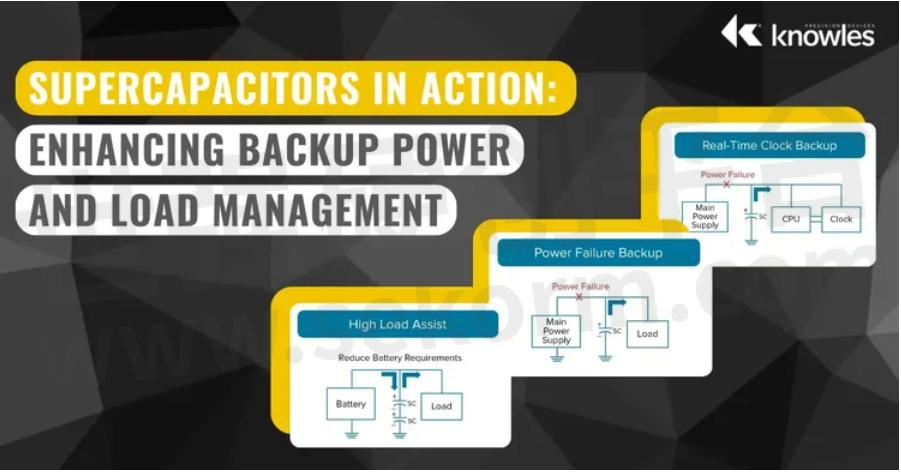
With built-in high-power characteristics, supercapacitors are critical in power electronics, where engineers are looking for short-term power peaks. Supercapacitors are also popular in low-power applications, like security installations. In these cases, batteries provide insufficient performance over time; in contrast, supercapacitors can efficiently handle those quick bursts of energy when needed and endure many more charge/discharge cycles than batteries over time.
Supercapacitors in Electronic Circuits
Supercapacitors play two main functions in electronic circuits. In battery-powered devices, they provide backup power in the event of disconnection (Figure 1a). They also provide alternating current (AC) voltage for devices with heavy switching currents (Figure 1b). In that case, supercapacitors protect the device’s memory, for example, from large voltage drops.
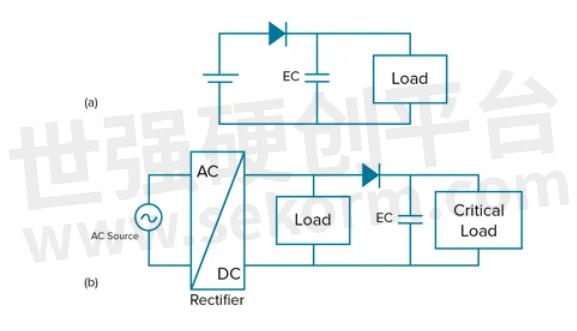
Figure 1. Common supercapacitor roles in electronic circuits, including backup power (a)
and protection against voltage drops (b).
The following examples demonstrate how supercapacitors assume these functions in real-time clock backups, power failure backups, high load assist systems and hybrid energy storage systems to enhance efficiency and reliability.
Real-Time Clock Backup
In real-time clock backup, also known as memory backup, solid-state drives have many advantages over hard-disk drives, including low power consumption and high reliability. By design, write speed is their main weakness, and that’s remedied using protected cache memory (SDRAM). SDRAMs need backup power, and supercapacitors are an excellent choice because of their fast response time, high power density and low maintenance requirements.
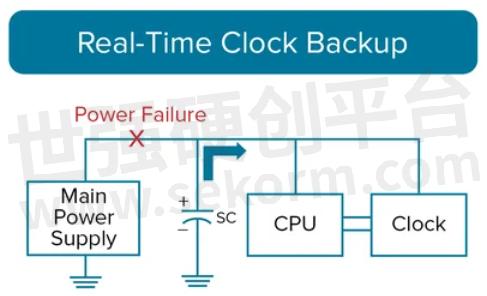
Power Failure Backup
Power supply backups, otherwise known as uninterruptible power supplies (UPS), offer emergency power when a system’s primary power source fails. In these cases, telecommunications, industrial and other electrical equipment can be subject to malfunction or data loss. To successfully provide uninterrupted power, the backup supply must be able to start up reliably and instantaneously.
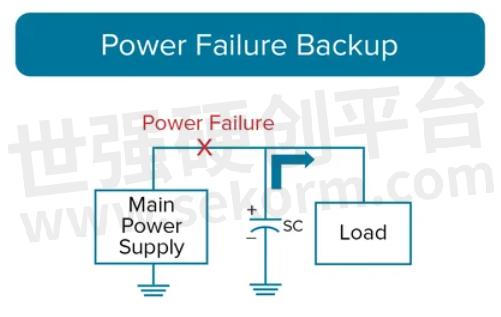
High Load Assist
Supplementary systems help maintain a system’s primary energy storage system (ESS). In some cases, like the camera flash on a smartphone, peak lower load is significantly higher for a short period of time. Supercapacitors are ideal secondary sources to handle those power bursts while leveraging a low-power, more cost-effective battery as the primary energy source.
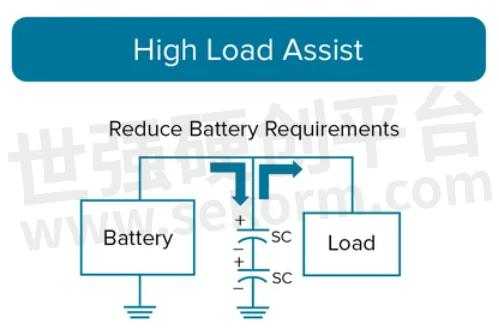
Hybrid Energy Storage Systems
Some energy storage systems combine supercapacitors with batteries to form hybrid energy storage systems (HESS). These are common in applications like the photovoltaic (PV) microgrids found in homes and neighborhoods. Microgrids are weak electrical grids, so they’re sensitive to load generation changes. A HESS decreases the impact of variations in load.
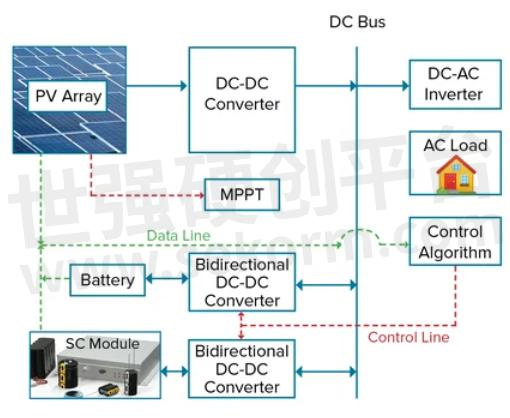
As technology continues to evolve, supercapacitors will remain a critical component in meeting the demand for more efficient, reliable and sustainable energy solutions.
- +1 Like
- Add to Favorites
Recommend
- Supercapacitors vs. Batteries: A Comparison in Energy Storage Solutions
- What Are the Advantages of Supercapacitors over Batteries?
- More power for supercapacitors – with the aid of Wevo potting compounds
- Nippon Chemi-Con Developed DKA Series Radial Lead Type Supercapacitors with Top-class Low Internal Resistance
- Knowles 3-Cell Supercapacitors Support Significant Jump in Energy Storage
- Key Features of Button Supercapacitors
- Supercapacitors: A Key Technology for Driving Modern Logistics
- Nippon Chemi-Con Developed Radial Lead Type Supercapacitors 2.7V Products DKG Series with Higher Withstand Voltage and Smaller Size
This document is provided by Sekorm Platform for VIP exclusive service. The copyright is owned by Sekorm. Without authorization, any medias, websites or individual are not allowed to reprint. When authorizing the reprint, the link of www.sekorm.com must be indicated.





























































































































































































































































































































































































































































































































































































































































































































































































































































































